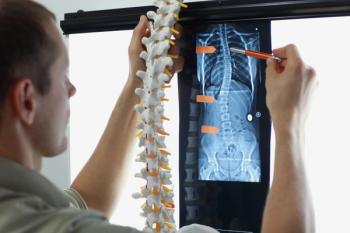
FDA issues warning about continuous glucose monitors
Key Takeaways
- The FDA warns of potential alert delivery issues in smartphone-compatible diabetes devices, which can lead to severe health consequences if undetected.
- Software and hardware changes, such as app notification settings and smartphone updates, can disrupt the expected operation of these devices.
Some patients report not receiving critical safety alerts, creating potentially life-threatening situations
The FDA issued a warning regarding the safety of
The agency reports that it has received medical device reports in which users say these alerts are not being delivered or not being heard, in cases where the users thought they had configured the alerts to be delivered. In some cases, missing these alerts may have contributed to serious harm, including severe hypoglycemia, severe hyperglycemia, diabetic ketoacidosis, and death.
"Modern medical devices, such as diabetes devices that connect to a smartphone, can provide users with the convenience and flexibility to configure alerts that are personalized to them. However, users should stay aware of alert settings and monitor these devices to ensure they continue to receive critical alerts as expected," said Courtney Lias, director of the Office of In Vitro Diagnostic Products in the FDA's Center for Devices and Radiological Health, in a statement. "Even if configured correctly, certain hardware or software changes can interrupt the expected operation of these critical devices, which can lead to patient harm if undetected."
The FDA has identified, among others, the following hardware and software changes, updates and configurations that may lead to critical alerts not being received as expected:
- Software configuration issues, such as app notification permissions, using "do not disturb" or "focus mode" or the app entering "deep sleep" after a period of not being used.
- Connecting new hardware to the smartphone, such as connecting to car audio or using wireless earphones, that can change the default volume of alerts or prevent delivery of alerts.
- Smartphone operating system updates that are not supported by the medical device application.
The FDA recommends the following for users of these devices:
- Carefully follow the instructions provided by diabetes device manufacturers when installing, setting up or updating mobile medical apps on the smartphone.
- Turn off automatic operating system updates to the smartphone and do not update the phone's OS until confirming the diabetes device app is compatible with the new OS version.
- After updating the phone's OS or adding a new accessory, such as wireless headphones, confirm alert settings then carefully monitor the medical device app to make sure alerts are received and can be heard as expected.
- At least once a month, check that the smartphone alerts are configured as expected.
- If alerts are not being received as expected from the mobile medical app, or cannot be heard, call the technical support number for the medical device for assistance.
- Report any problems with the diabetes device to the FDA.
According to the agency, it is working with diabetes-related medical device manufacturers to ensure that smartphone alert configurations of their devices are carefully evaluated prior to use by patients. The agency is also working with manufacturers to ensure that settings in smartphones and mobile medical apps that may impact safety alerts are continuously tested and any updates to recommended configurations are communicated quickly and clearly to users.
Newsletter
Stay informed and empowered with Medical Economics enewsletter, delivering expert insights, financial strategies, practice management tips and technology trends — tailored for today’s physicians.















